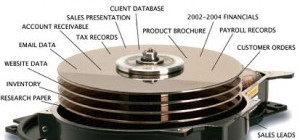 An Increasingly Prescient Threat
An Increasingly Prescient Threat
Cyber security can’t be ignored. Firstly, if your business is compromised, you’re going to likely lose thousands, minimum. Consider ransomware that is caught after it has locked files. Well, even if you have the ability to reboot from a data recovery solution facilitated through the cloud, you face operational downtime during that reboot.
How much is your time worth as a business? If you’ve got ten employees at a value of $50 an hour, including benefits, should the reboot take an hour—and including setting up systems and getting back to work, that would be a conservative estimate—you’re out $500. If those employees would make sales or something of the kind during that time, you’re out more.
The likelihood is, a $1,000 minimum loss without the need to pay hackers to remove ransomware is the least even a small business will pay. And that’s if you can afford the downtime for a reboot. Most likely, you won’t be able to, and so you’ll have to shell out several thousand to the cyber-criminals.
If that weren’t enough, cybercrime today is defined as a “growth” industry. A cursory online search reveals that this industry is worth more than $500 billion annually, and rising. It’s not just the ransomware, it’s developers of ransomware. Then there’s spyware, adware and other types of viral malware which is everywhere.
Ways To Safeguard Operations
Now there are a few things you can do to protect your business from this increasingly prevalent tech scourge. Firstly, you can work with technology organizations who have made it their business to secure you. Proactive monitoring and support are ideal, and you want to look for that kind of thing as you search for solutions.
Secondly, you can start an education campaign so that all your employees know what to do. Best and worst practices must be identified. Good practices need to be encouraged, bad ones stigmatized and avoided. Email utility protocols are important. If you’ve got BYOD (Bring Your Own Device), then UEM (Unified Endpoint Management) software is advisable.
Today there are many different applications which can be run from the cloud—you can even handle all the regular clock-ins of employees remotely this way. There’s often greater security on the cloud because it’s the prerogative of providers to proactively secure systems. Also, BDR is much more streamlined.
Then you’ve got patching. A software patch basically identifies a vulnerable area and corrects it. There are likely to be many software patches that will develop through a software’s lifecycle. According to cbisecure.com, “…the single most important thing to do related to security in your environment? …Patch your systems.”
A Recent Security Threat, Consequences, And Defense
If you’re up on your tech news, you may have heard of the WannaCry ransomware intrusion. Basically, the NSA built a backdoor into Windows computers, then that information became public knowledge and hackers scrambled to exploit it. This back door was patched back in March, and the hack attack hit in May.
It was very pernicious because it undercut many best practices. Basically, WannaCry entered computers through SMB ports, meaning users didn’t have to do anything wrong in order to have systems become compromised by the virus. Had those businesses compromised patched software beforehand, they wouldn’t have been vulnerable.

So you definitely want security solutions from providers who not only continuously monitor operations, but are up on the latest developments throughout the market, and can help provide you necessary patches as such compromising situations arise.
Today, there are many situations like this, and having security to counteract them is integral.







